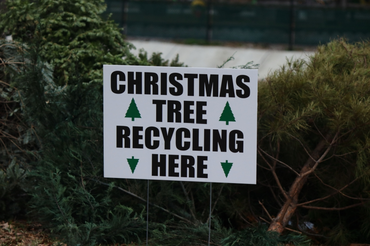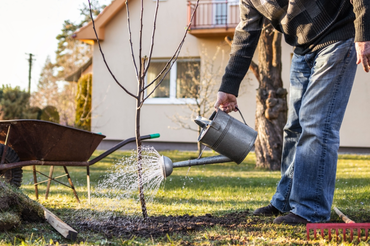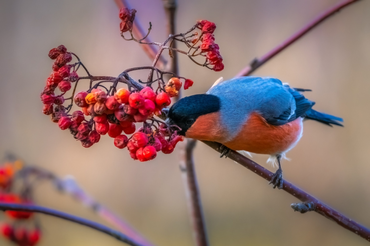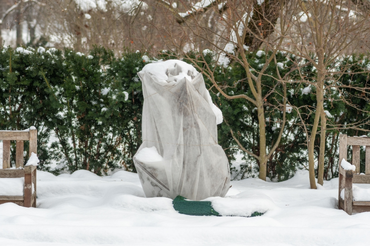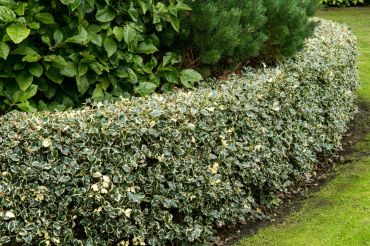
Shrubs and hedging are core components in any garden. Used to add structure, they can define boundaries and create a framework for your outdoor design. What’s more – they’re typically low-maintenance and robust, which makes them a great option for enthusiastic and reluctant gardeners alike!
With so many varieties to choose from, finding the right hedging plants and shrubs can be tricky. You’ll want to ensure that the species you plant are well-suited to the environment and provide the visual impact you’re looking for. For inspiration, take a look at these six top hedging plants and shrubs now:
1. Laurel
Laurel – or prunus laurocerasus – is an excellent choice of hedging shrub. As an evergreen plant, it provides good coverage all year round and will continue to provide clean lines even during autumn and winter. In addition to this, laurel can thrive in both sunshine and shade, which makes it a versatile option that can be used virtually anywhere in your garden.
While laurel typically grows well in any type of soil, you can add a layer of compost to sandy or heavy soil when planting to make it easier for laurel to become established. As laurel can grow 15-60cms each year, regular pruning will help ensure the hedge keeps its shape and grows back thicker. They can be cut back quite severely without causing damage to the plant.
2. Box
Also known as buxus sempervirens, box is one of the most popular hedging plants in the UK. Characterised by its small, dense, evergreen leaves, box hedging is an easy way to incorporate shrubs into your garden. Generally, box plants only grow around 10-15cm each year, so you may want to plant mature shrubs if you’re looking for instant boundary lines. In recent years Buxus has become badly effected by Box caterpillar moth which can devour a plant in a couple of days. You can install moth traps and treatments but these have to be replaced regularly to keep the pests away. We no longer recommend Buxus due to these issues. Instead we recommend planting Ilex which is similar to Buxus (the leaves are a little bit bigger) but they are not effected by the moth and have better resistance to blight. If you only want your hedge to be 2-3ft tall you can also consider Euonymus which looks similar and has a lush green evergreen leaf.
Box hedging can be planted in almost any soil, although it doesn’t tolerate very wet or windy conditions brilliantly. Despite this, it’s super easy to maintain and shade tolerant, so you won’t need to do much to keep it healthy. Simply prune box hedging back to keep the desired shape and height and you’ll have the perfect addition to your garden!
3. Rockrose
If you want to add a pop of summer colour to your hedging, rockrose is a great alternative to classic shrubbery. Throughout late spring and summer, it will be filled with bowl-shaped blooms in purple, red, yellow, pink, or white but their dense foliage and narrow leaves will last all year round.
Native to the Mediterranean, Rockrose does need a decent amount of sunshine to thrive, so avoid planting it in shady locations. As it is very drought-tolerant, it won’t need frequent watering and will do well in sandy, chalky, or even clay soil.
During early spring, prune rockrose to facilitate optimal growth but, apart from this, it shouldn’t require much maintenance at all. Rockrose can reach 1m-1.5m in height and will spread horizontally, as well as growing vertically. This makes it an ideal option for borders, rockeries, courtyards, and suntraps.
4. Beech
If you’re looking for a fast-growing hedging shrub that will provide privacy, create boundaries, and look sensational, fagus sylvaticus is the answer! Although beech hedges are deciduous, their winter leaves tend to stick around until new growth arrives in spring, which makes them a great option as a hedging shrub.
Ideal for formal hedges or well-manicured gardens, you may want to opt for a purple beech hedge if you want to add a little more colour to your outdoor space.
Beech hedges grow well in either full sun or partial shade, but it does require well-drained soil, so avoid planting it in clay or wet soil where possible. Beech hedges can reach 1m-5m in height and grow at a rate of around 30-60cm per year. Due to this, you will need to keep hedges maintained to prevent excess growth. Trim in late summer or early autumn to ensure maximum winter coverage.
5. Lavender
Instantly recognisable, lavandula angustifolia, is known for its dazzling purple flowers and rich scent. Lavender shrubs can grow to around 1m in height and flower in the summer, although they retain their foliage through every season.
Although lavender shrubs are relatively hardy, they do prefer full sun, so try to avoid planting them in shady conditions. Similarly, lavender plants won’t tolerate wet or waterlogged soil, so choose a spot with sandy or well-drained soil. Prune immediately after the shrub has flowered or in early to mid-spring if you want shrubs to flower in the summertime.
6. Privet
An old favourite and has fallen out of fashion in the last 20yrs. It is a great hedging plant though and should be considered for long runs of hedge to keep costs low. It is good value for money and grow quite quickly, growing over a foot a year once established. It is very resilient and can be cut back severely if needed. You can also make shapes and arches with it!
Planting Shrubs and Hedging
Before planting, soak bare-root plants in water for at least an hour or water container-grown shrubs. You’ll need to dig a hole that’s big enough to contain the rootball but, if you’re planting a hedge, it’s generally easier to dig a trench and then position each rootball evenly.
Surround the rootball with soil and firm the soil around the trunk of the shrub and water them generously. Throughout the first year, new shrubs and hedging should be watered regularly. To optimise growth, add compost or manure once per year, either in spring or autumn.
No matter what type of garden you’re cultivating, shrubs and hedging can create a stunning visual impact and increase the functionality of the space. If you’d like advice or assistance with hedging or shrubs, simply get in touch with our team today.

